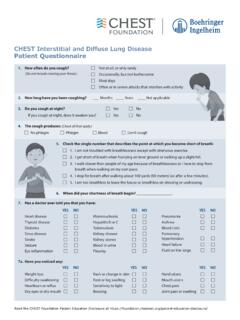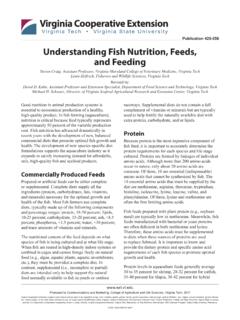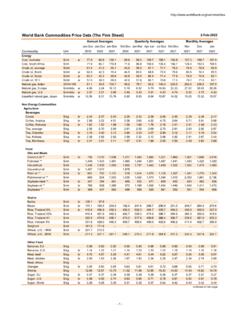Transcription of Black Soldier Fly Biowaste Processing - Eawag
1 11 Black SBodiekrBFk1dSylwsikteSaiwwdPnBlack Soldier Fly Biowaste ProcessingA Step-by-Step GuideSandec: Department ofSanitation, Water and Solid Waste for DevelopmentImpressumPublisher: Eawag Swiss Federal Institute of Aquatic Science and Technology Department of Sanitation, Water and Solid Waste for Development (Sandec) berlandstrasse 133, 8600 D bendorf, Switzerland Phone +41 58 765 52 86 Cover picture: Sirajuddin KurniawanPhotos: Eawag (unless stated otherwise)Layout: Leanza Mediaproduktion GmbH Figures: Stefan Diener, EawagEditing: Paul DonahueReview: Moritz GoldPublished: 2017 Circulation: 200 copies printed on original recycled paperISBN: 978-3-906484-66-2 Bibliographic reference: Dortmans , Diener S., Verstappen , Zurbr gg C. (2017) Black Soldier Fly Biowaste Processing - A Step-by-Step Guide Eawag : Swiss Federal Institute of Aquatic Science and Technology, D bendorf, SwitzerlandThe content of this document is licensed under a Creative Commons Attribution International license 4 1 Black SBodiekrBFk1dSylwsikteSaiwwdPnBlack Soldier Fly Biowaste ProcessingIBlack Soldier Fly Biowaste ProcessingA Step-by-Step GuideBram DortmansStefan DienerBart VerstappenChristian Zurbr ggWritten and published with financial support from the Swiss Agency for Development and Cooperation (SDC) and the Swiss State Secretariat for Economic Affairs (SECO)Wichtiger HINWEIS !
2 Innerhalb der Schutzzone (hellblauer Rahmen) darf kein anderes Element platziert werden! Ebenso darf der Abstand zu Format- resp. Papierrand die Schutzzone nicht verletzen! Hellblauen Rahmen der Schutzzone nie drucken!Siehe auch Handbuch Corporate Design der Schweizerischen Bundesverwaltung Kapitel Grundlagen , / Schutzzonewww. 1 Black SBodiekrBFk1dSylwsikteSaiwwdPnBlack Soldier Fly Biowaste ProcessingIIIT able of contents:GLOSSARY IVChapter 1: RATIONALE General Introduction Scope and target audience Navigating through this guide 3 Chapter 2: WASTE TREATMENT BY BSF Understanding the natural BSF life cycle Overall siting consideration for a BSF Processing facility Engineering the BSF life cycle 10 Chapter 3: ACTIVITIES IN A BSF Processing FACILITY Activities in the BSF rearing unit Activities in the waste receiving and pre- Processing unit Activities in the BSF waste treatment unit Activities in the product harvesting unit Activities in the post-treatment unit (larvae refining and residue Processing ) 54 Chapter 4: HANDLING SCHEDULES IN A BSF- Processing FACILITY 56 Chapter 5: BLUE PRINTS OF EQUIPMENT 79 Chapter 6.
3 MATERIAL REQUIRED IN A BSF Processing FACILITY Material for the BSF rearing unit Material for the BSF waste Processing unit 85 Black Soldier Fly Biowaste ProcessingIV 5-DOL: Abbreviation for Five-Day-Old-Larvae. Keeping the hatchlings in a controlled and protected environment for five days after hatching in-creases the survival rate and allows the larvae to be counted before they are added to the : The final development stage after pupation. With insects, this is usually called imago .Anaerobic digestion: Degradation of organic compounds by microorganisms in the ab-sence of oxygen, leading to the production of trap: Protects from ant invasion. Each table leg is placed into a container filled with water and a drop of detergent. The detergent reduces the surface tension of the water. Attractant: Smelly liquid substance that attracts BSF females to lay eggs near-by.
4 Usually, this contains different smelly substances like fermenting fruit, dead flies or residue. BSF eggs have also been found to act as an attractant. It is, therefore, advisable not to harvest eggs every day as the already laid eggs attract other operation: In batch operation, a defined amount of waste and larvae are added to a container, which is harvested after a certain time. Batch opera-tion is in contrast to continuous operation, where waste and larvae are added continuously to the same container. The container is only emptied once it is : Generally, all biodegradable matter. In this particular context, it does not include waste high in cellulose ( garden waste, wood, grass clippings, leaves, etc.) as this cannot be easily digested by the : Black Soldier fly, Hermetia illucens Coco peat: The powdery material resulting from Processing coconut fibre.
5 In this context, it is mostly used for its moisture absorbing properties. It can be replaced by other materials with similar moisture absorbing properties, such as wheat bran, for : Organic matter that has been degraded and transformed by aerobic processes to a soil-like substance and can be used as a fertilizer and soil cage: Adult flies emerge in the dark cage where they remain until trans-ferred to the love cage. The darkness keeps the flies calm and pre-vents mating code: The date code allows for calculating the duration of the ongoing pro-cess and is applied to cages and containers. It consists of the calen-dar week of the year and the day of the week (for example: Tuesday of week 8 is coded as ). Dry matter: The mass of the matter after all water has been removed. It is usu-ally determined by keeping a sample in an oven at 105 C for at least 12 Soldier Fly Biowaste ProcessingVEgg: A female fly lays between 400 and 800 eggs from which young lar-vae will hatch within four days.
6 One egg weighs about 25 : The media used in an engineered BSF-system to collect eggs. It pro-vides sheltered cavities for egg : When adult flies emerge from a pupa after biosystem: A biological process that has been optimised for a practical sludge: A waste product from onsite sanitation systems, such as pit latrines or septic tanks. It is usually a combination of excreta and water, of-ten mixed with sand and household station: A designated area where waste is added to the larveros. It is advis-able that it can be cleaned easily (tiled or sealed floor) as Biowaste may be spilled during the feeding : fishmeal is a nutrient-rich feed ingredient used in the diets of farmed animals. It is manufactured from wild-caught small marine fish and is a powder obtained after grinding, cooking and defatting the fish. fishmeal production is a significant contributor to and restaurant Biowaste from restaurants consists of kitchen scraps and food waste: waste.
7 It typically has a higher nutritional value and a lower water content than market waste or food Processing Processing waste: Biowaste from the food Processing industry. It varies from fruit and vegetable bits to bread crumbs and/or dairy products. It is usually a homogenous and uniform waste mill: Crushes and shreds material into smaller pieces by repeated strikes of small hammers. It does not cut material. The particle size is de-fined by the diameter of the outlet : The process of young larvae (hatchlings) emerging from the egg. Hatchling: Larvae that have just hatched from the eggs. Sometimes also called n e o n a te s .Hatchling container: Hatchlings fall into the hatchling container after hatching where they remain and feed for five days on nutritious feed (chicken feed) to be-come shower: Harvested eggies are placed on a rack called a hatchling shower, which is placed over a hatchling container.
8 When young larvae hatch, they fall into the hatchling container, which is replaced regu-larly (every one to three days).Human faeces: Excrement that is not mixed with urine or water. A product from urine-diverting dry oven: An oven which provides a uniform temperature. In BSF Biowaste Processing , it is mostly used to obtain dry matter samples from waste, residue and larvae, and operates at 105 Soldier Fly Biowaste ProcessingVI Larva: The juvenile stadium of holometabolous insects. There are seven larval stages, so-called instars, in the life cycle of the Black Soldier fly before metamorphosis (transforming them into an adult fly). Larvero: The larvero is the container where larvae feed on Biowaste . It can be of any form, from a standard crate (60x40x15cm) to a pallet sized bin, and up to large concrete cage: The love cage is a netted enclosure with a cohort of same-aged flies received from the dark cages.
9 In the love cage, adult flies mate and females lay their eggs into eggies. After a week, the love cage is removed and and middle- Although BSF Biowaste treatment can be applied all around theincome setting: globe, the set-up and operation presented in this book focuses on low- and middle-income countries (GNI up to 10,000 EUR). This context is characterized by low labour costs, and a high organic frac-tion of the municipal solid waste. Market waste: Consists mostly of fruits and vegetables. It has a high water content (up to 95%) and is subject to seasonal variation. The outer parts of leafy vegetables may have been exposed to organic Waste generated by settlements, which includes households, waste: commercial and industrial premises, institutions (schools, health care centres, prisons, etc.) and public spaces (streets, bus stops, parks and gardens).
10 Nursery container: In the nursery container, 5-DOL are fed a defined amount of nutri-tious feed ( wet chicken feed) until they transform into prepupae. These are used to maintain the colony, which are transferred to the pupation containers where the prepupae pupate and eventually emerge as : Equipment that molds larvae and other feed ingredients (soymeal, corn, rice husks, etc.) into feed pellets for fish or manure: Manure from broiler production or layer hens. BSF larvae grow well on this rather homogenous Biowaste , but tend to remain quite small. This substance is rather dry and may, thus, be used in combination with fruit and vegetable : The last larval stage that crawls out of the waste to search a dry pupation site. In comparison to the larvae, prepupae have a higher chitin content and are, therefore, less easy for fish and chicken to : During pupation, the metamorphosis from larva to adult fly happens.








